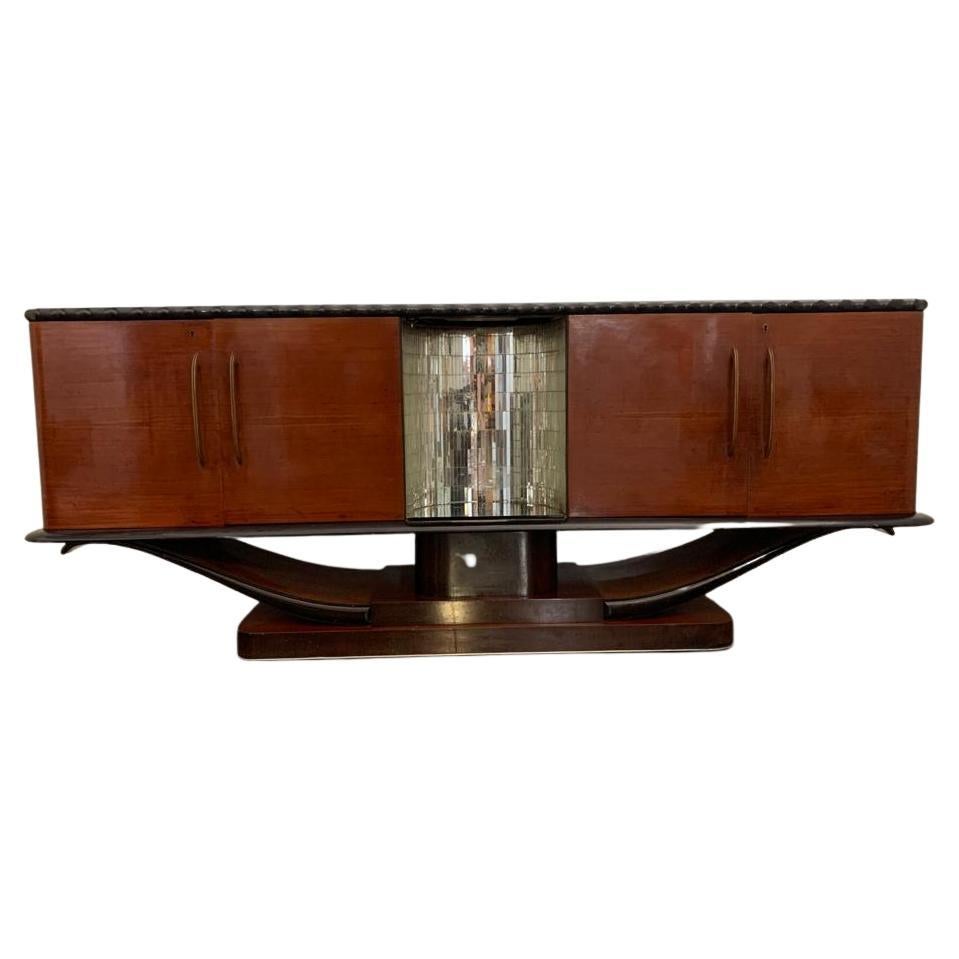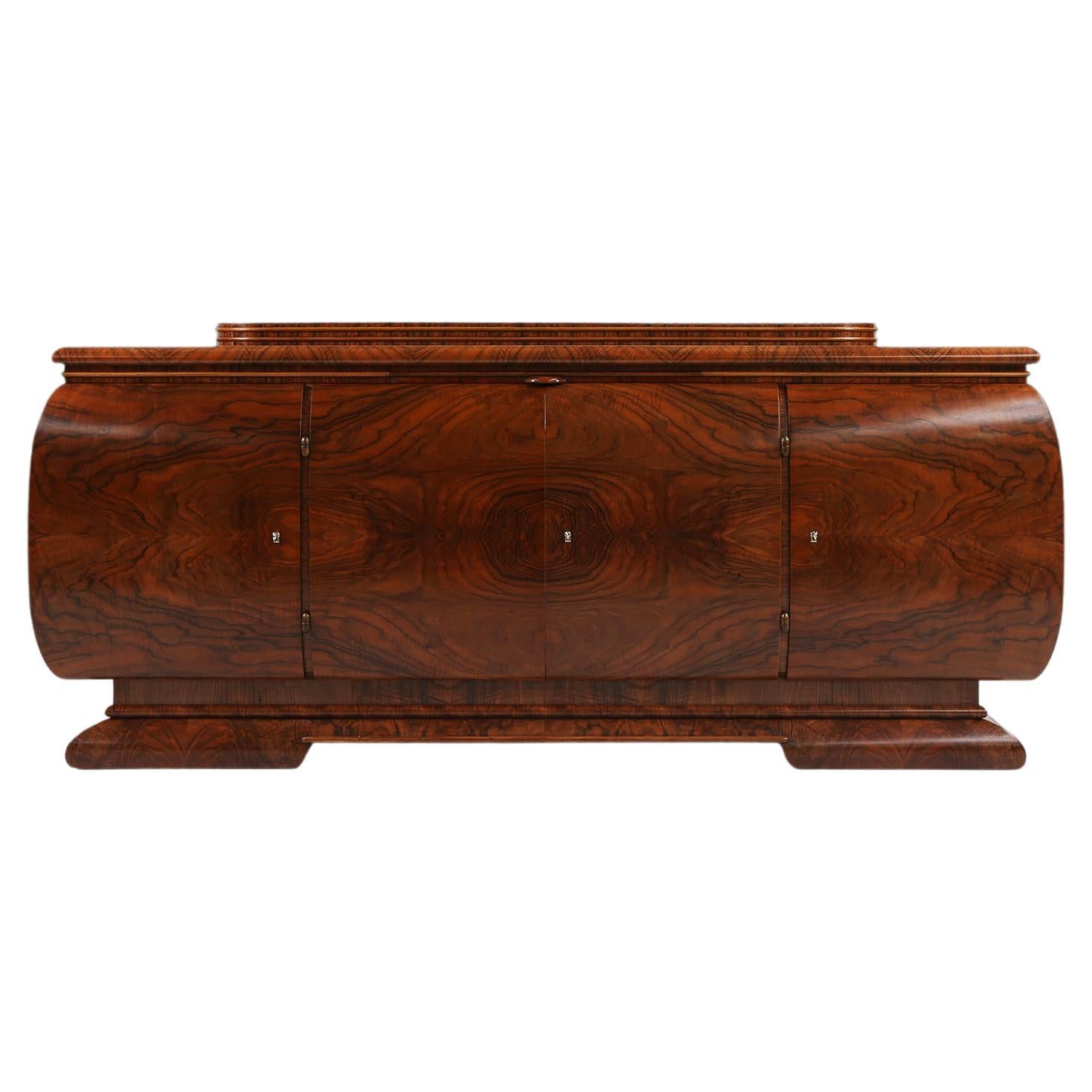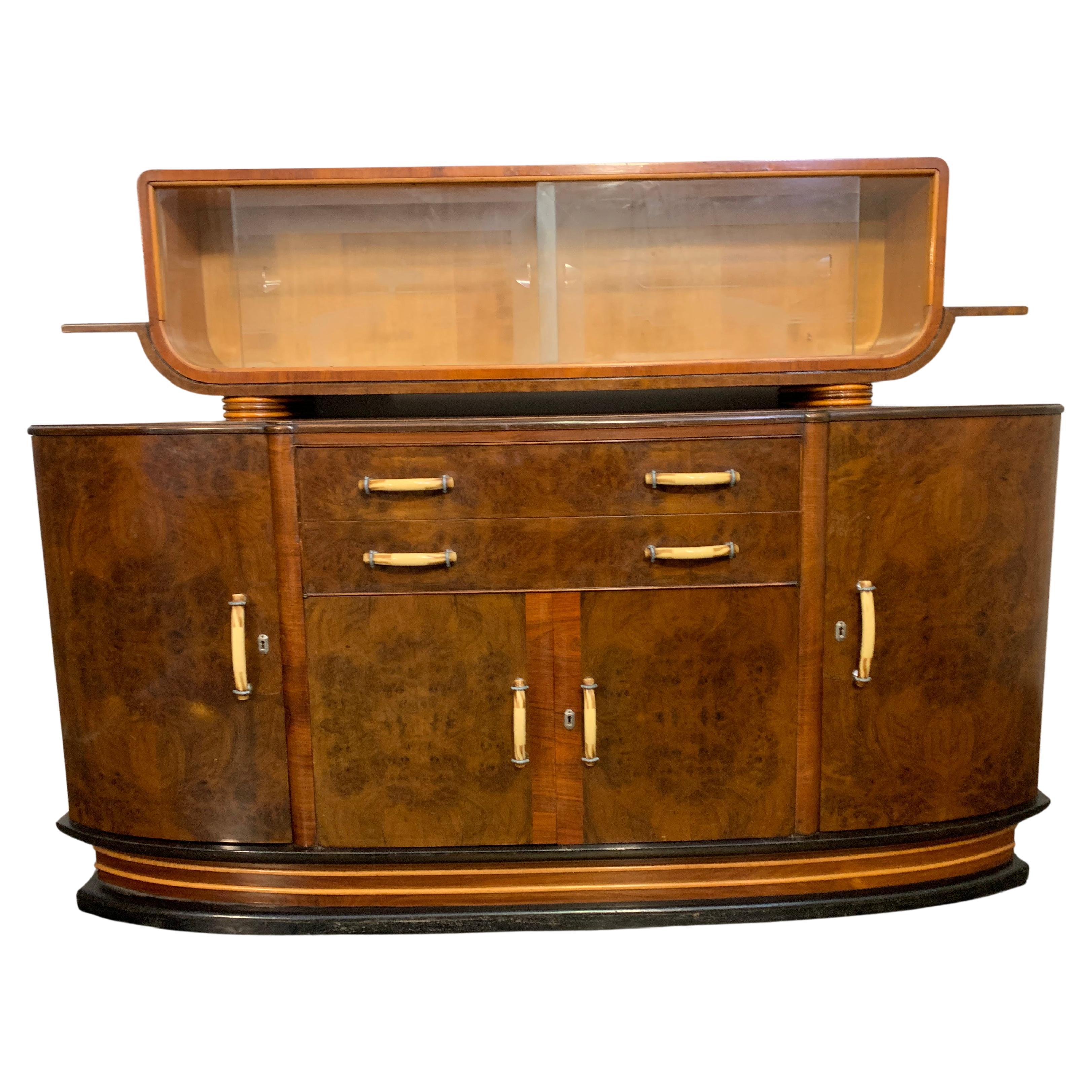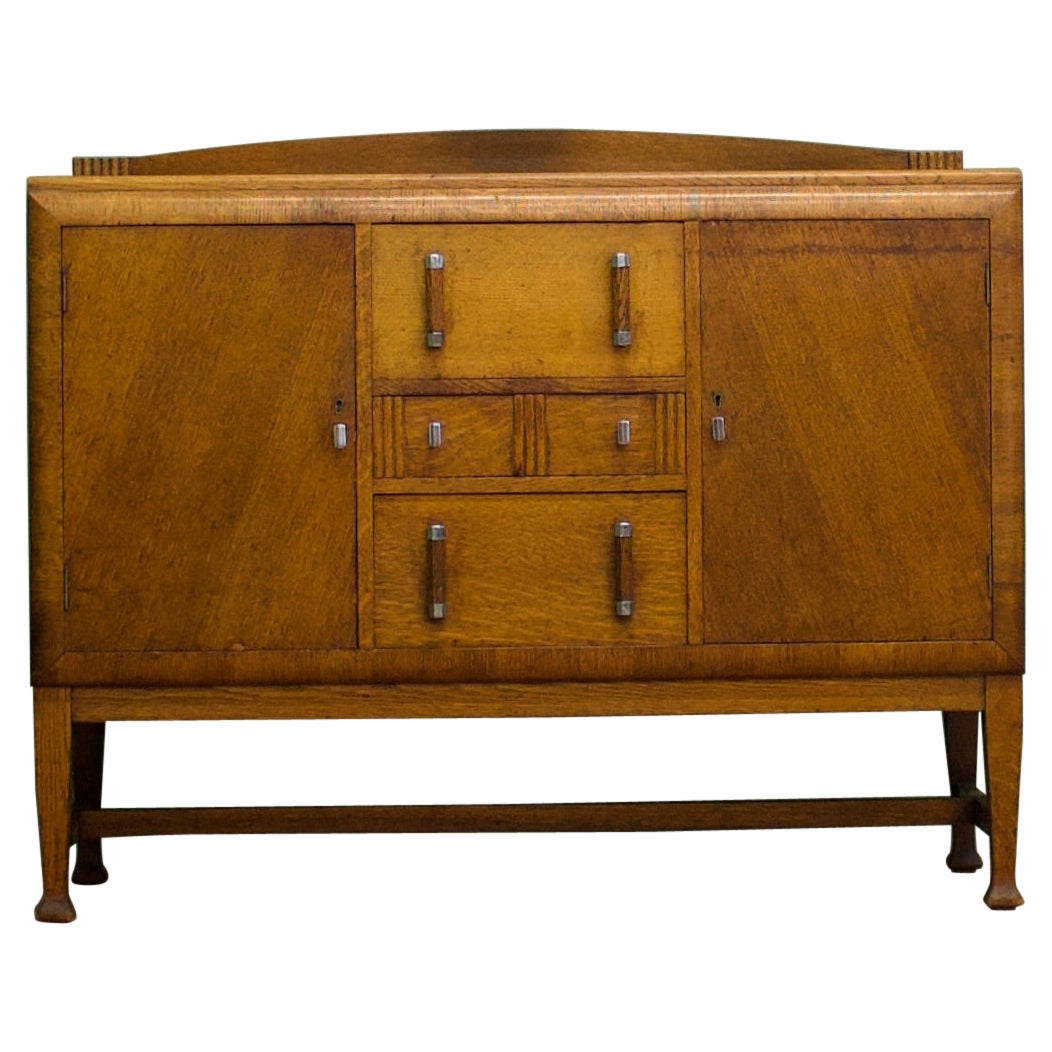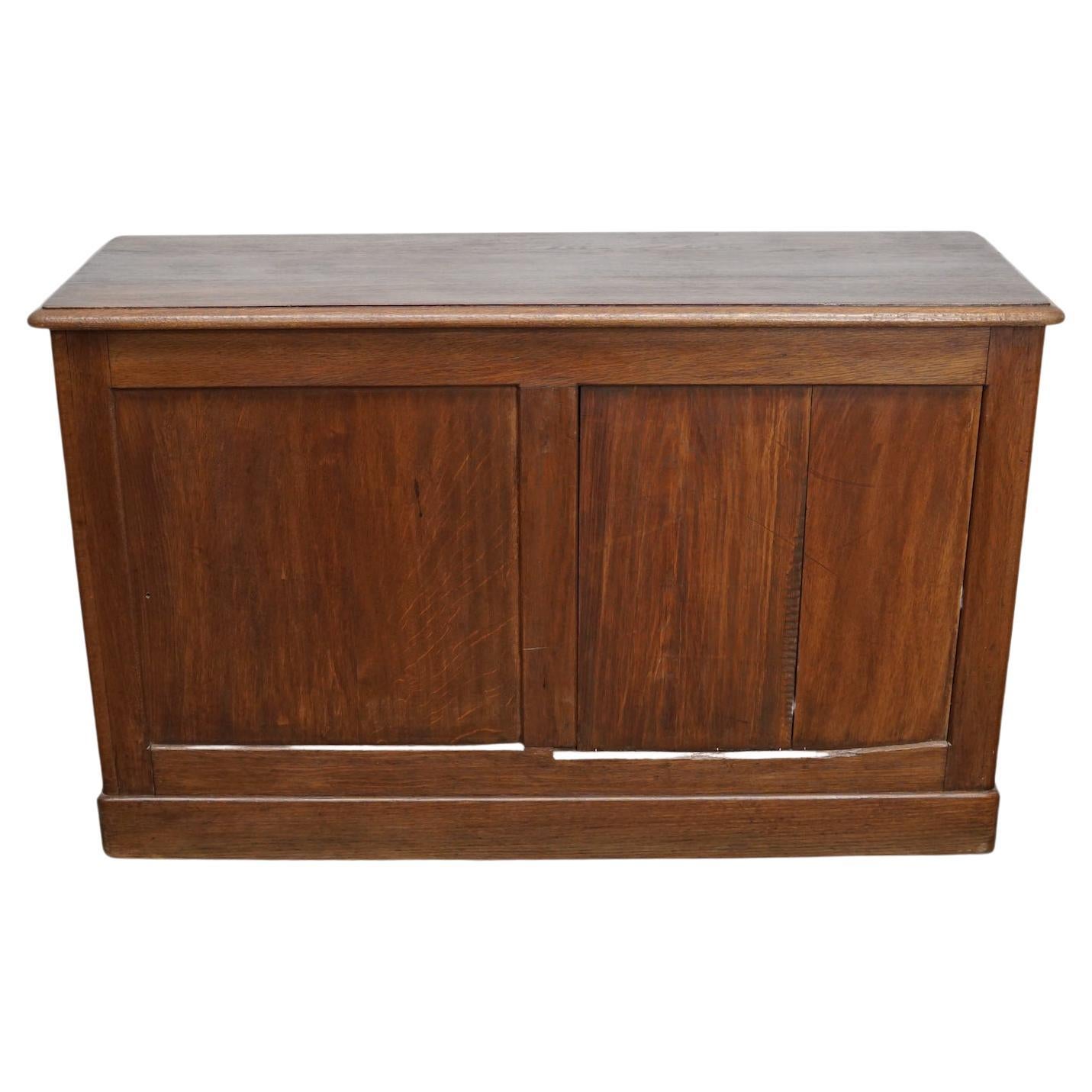Want more images or videos?
Request additional images or videos from the seller
1 of 14
Vintage Hall Sideboard, 1930s
About the Item
Hall furniture, elm and briarwood, finely carved with the theme of animals and forest . Exquisite combination of interior and exterior elm wood and elm briar. The style and themes of the carvings lead back to the style of Pierluigi Colli.
- Creator:Pier Luigi Colli (Designer)
- Dimensions:Height: 50.4 in (128 cm)Width: 76.38 in (194 cm)Depth: 19.69 in (50 cm)
- Style:Art Deco (In the Style Of)
- Materials and Techniques:
- Place of Origin:
- Period:
- Date of Manufacture:1920-1949
- Condition:Patina consistent with age and use.
- Seller Location:Montelabbate, IT
- Reference Number:
About the Seller
5.0
Vetted Seller
These experienced sellers undergo a comprehensive evaluation by our team of in-house experts.
1stDibs seller since 2022
40 sales on 1stDibs
Typical response time: 21 hours
- ShippingRetrieving quote...Ships From: Montelabbate, Italy
- Return PolicyA return for this item may be initiated within 14 days of delivery.
More From This SellerView All
- Mahogany Sideboard, 1930sLocated in Montelabbate, PUSideboard in mahogany ebonized profiles, with niche in mosaic mirror for sculpture, black crystal top, brass handles. Shelves are missing.Category
Vintage 1930s Italian Art Deco Sideboards
MaterialsBrass
- Art Deco Rosewood Sideboard, 1930sLocated in Montelabbate, PUArt Deco sideboard, solid wood veneered structure. Of great quality A rich base composed of a black frame that contains a rosewood band with 2 parallel maple profiles, running around...Category
Vintage 1930s Italian Art Deco Sideboards
MaterialsGlass, Rosewood, Burl
- Art Deco Italian Parchment Sideboard, 1930sLocated in Montelabbate, PUArt Deco Italian parchment sideboard, 1930s.Category
Vintage 1930s Italian Art Deco Sideboards
MaterialsParchment Paper
- Ash Sideboard with Carved Panels, 1930sLocated in Montelabbate, PUSideboard in solid ash, with finely carved tiles with cherubs that identify the 4 seasons. Interior in rosewood. original and overhauled hinges, locks and ...Category
Vintage 1930s French Art Deco Sideboards
MaterialsAsh, Rosewood
- Sideboard in Ebony and Briarwood, 1930sLocated in Montelabbate, PUSideboard with ebonized riser and tuja briar laid open and divided into squares by ebony fillet of generous dimensions. Latch for key in ivory.Category
Vintage 1930s Italian Art Deco Sideboards
MaterialsBurl, Lacquer, Ebony
- Vintage Art Deco Style Hall SideboardBy Osvaldo BorsaniLocated in Montelabbate, PURoom furniture of exquisite proportions, in the style of Osvaldo Borsani. The vase base rests on green marble and is profiled with brass dotted lines and an ebonized profile, support...Category
Mid-20th Century Italian Art Deco Sideboards
MaterialsBurl
You May Also Like
- Italian Art Deco Sideboard by Pier Luigi Colli, 1930sBy Pier Luigi ColliLocated in Rome, ITElegant sideboard in ash and mahogany with magnificent legs that come out from the base. The same furniture is available the table, eight chairs, and the unique cabinet bar. Wanting ...Category
Vintage 1930s Italian Art Deco Sideboards
MaterialsAsh, Mahogany
- Monumental De Coene Sideboard, 1930sBy De Coene FrèresLocated in Meulebeke, BEMonumental sideboard made by Belgian brand De Coene in the 1930s. This credenza is made with the highest quality of material. The beautiful wood structure that overflows from one ...Category
Vintage 1930s Belgian Art Deco Sideboards
MaterialsMarble
- Art Deco Oak Sideboard, 1930sBy Heal'sLocated in South Shields, GBA high quality, dark oak Art Deco sideboard, circa 1930's-1940s This piece is heavy and sturdy Featuring two drawers and two cupboards with shelvesCategory
Vintage 1930s British Art Deco Sideboards
MaterialsOak
- Vintage German Oak Shop Counter / Sideboard, 1930sLocated in Nijmegen, NLThis oak shop counter was made around the 1930s in Germany. It was very well made and it remains in a good antique condition. The interior dimension of the drawers are: D W H 31 x 53...Category
Vintage 1930s German Industrial Sideboards
MaterialsOak
- Swedish Functionalist Sideboard, 1930sLocated in Stockholm, SEStriking Swedish functionalist sideboard from the 1930s. Neat size, with a set of drawers with slanted fronts on one side. Matching slanted handl...Category
Vintage 1930s Swedish Scandinavian Modern Cabinets
MaterialsBirch
- Pier Luigi Colli Large Sideboard in Wood with Drawers Italian Manufacturer 1930sBy Pier Luigi ColliLocated in Montecatini Terme, ITLarge sideboard is entirely realized in oak wood, with four drawers on each side (for a total of eight drawers) and a central storage unit. Designed by Pier Luigi Colli Italian Manufacture from 1938 ca. To reconstruct the story of Pier Luigi Colli, we must take a leap back to the 19th century in Turin, a multifaceted city, in some ways controversial due to its austere and sometimes introverted character, but at the core of a creative drive: and if it is primarily known for its automobile industry, there was a time when Turin was at the height of fame also in the field of furniture and embroidery, thanks to the presence of two entrepreneurial realities. On the one hand there was the MIRAM (Italian Hand-Made Embroidery Manufacture) founded by Pietro Colli in 1850, specializing in gobelin fabrics and bandera embroideries. His daughter Teresa traveled between Italy and Paris to discover the latest trends in fabrics and embroidery, while her younger brother, Pier Luigi Colli (1895-1968), the star of this story, joined the company in 1921. Distinguishing himself for his enterprising personality and willing to continue his father's profession, Pier Luigi was known to his contemporaries as "the artist interior designer", and had no doubts about his future: he moved temporarily to Paris, where he attended L'Ecole des Beaux Arts Décoratives. The other great Turin manufacturer to be mentioned is Martinotti, founded in 1931 by Giuseppe Martinotti and supplier of fine furnishings for the Savoy court, pieces which were characterized by a typically 19th century eclectic style, generally made of exotic woods featuring ivory and tortoiseshell inlays: at that time, Martinotti represented the top of internationality, having even participated in the 1875 Philadelphia exhibition! The two brands' fate merged in 1902, a decisive year for Turin which, hosting the International Exhibition of Modern Decorative Art, became the cradle of the spread of the Liberty style in Italy. In the exhibition, Martinotti exhibited an elegant interior, in which all the textile parts, from the curtains to the seat upholstery, was made by Colli. It was in 1926 that Colli (MIRAM) finally acquired Martinotti, founding a laboratory where, from the savoir faire of the two companies, complete pieces of furniture were created and tailor-made for the customer, from the structure to its upholstery. Meanwhile, Pier Luigi Colli was living in Paris, the ideal place to be in 1925, when the International Exhibition of Modern Decorative and Industrial Arts brought him closer to the work of one of his putative fathers, the great French cabinet maker Jacques-Émile Ruhlmann (Paris, 1879 - 1933). Thanks to Paris, Pier Luigi intertwined contacts with the international beau monde, he started to import Lalique glass from France, while the Colli's clientele expanded and special commissions arrived, such as the creation of the Royal Train of the Savoy family made with Fiat, or the lecture hall in the University of Turin. The success of a brand is also measured by its openness to establishing collaborations with the great designers of its time, in the case of Colli resulting in important creative partnerships: from Gio Ponti, who relied on the brand for his Richard Ginori project in Rome, up to Carlo Mollino, who created with Colli the handrails of the RAI (national TV) auditorium and the windows of the Teatro Regio in Turin; also in Turin, the Morbelli architects collaborated with Colli for the furnishings of the RAI skyscraper, and the architects Gabetti Isola for the interiors of the Stock Exchange in Turin. In the 40s and 50s, having opened a branch in Rome, Colli was at the peak of productivity. The embroidery and textile section continued to be one of its strengths, keeping alive the relations with France and its great masters: among the inspirations were the geometric shapes of the fabrics of Ruhlmann's interiors, or the tactile carpets made by designer Mariod Dorn. And so, another Colli trademark become the "textured carpet...Category
Vintage 1930s Italian Mid-Century Modern Sideboards
MaterialsWood, Oak
Recently Viewed
View AllMore Ways To Browse
Hall Furniture
Haller Furniture
Vintage Halls
1930s Hall
1930s Vintage Italian
1930s Italian Interiors
Sideboard With Carvings
Italian Sideboard Vintage
1920 Sideboard
1930s Vintage Sideboard
1930s Dining Room Sideboard
Piered Cabinets
Vintage Elm Wood Cabinet
Briar Cabinet
Art Deco Hall Cabinet
1920 Art Deco Sideboard
Vintage Animal Wood Carvings
1930s Carved Cabinet

